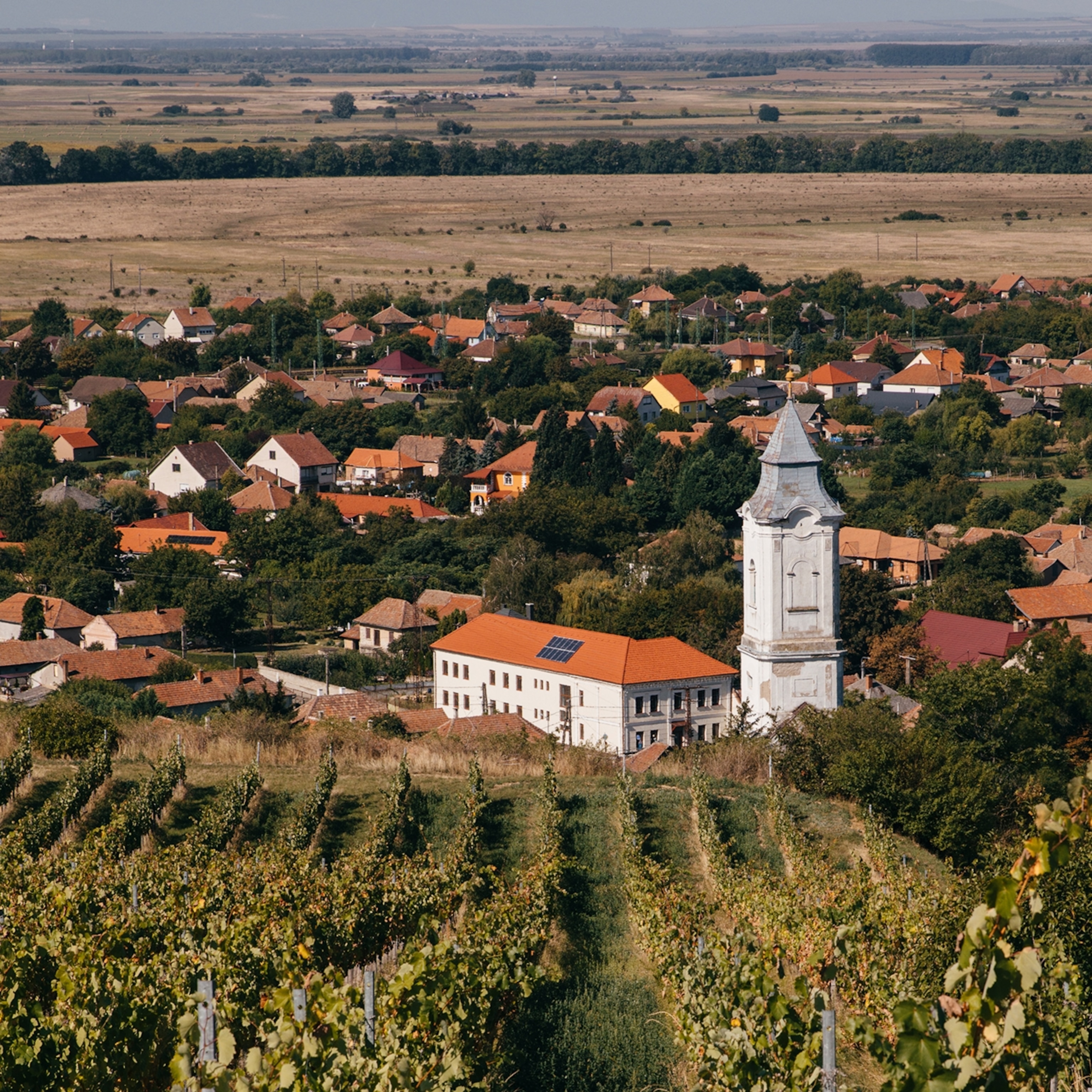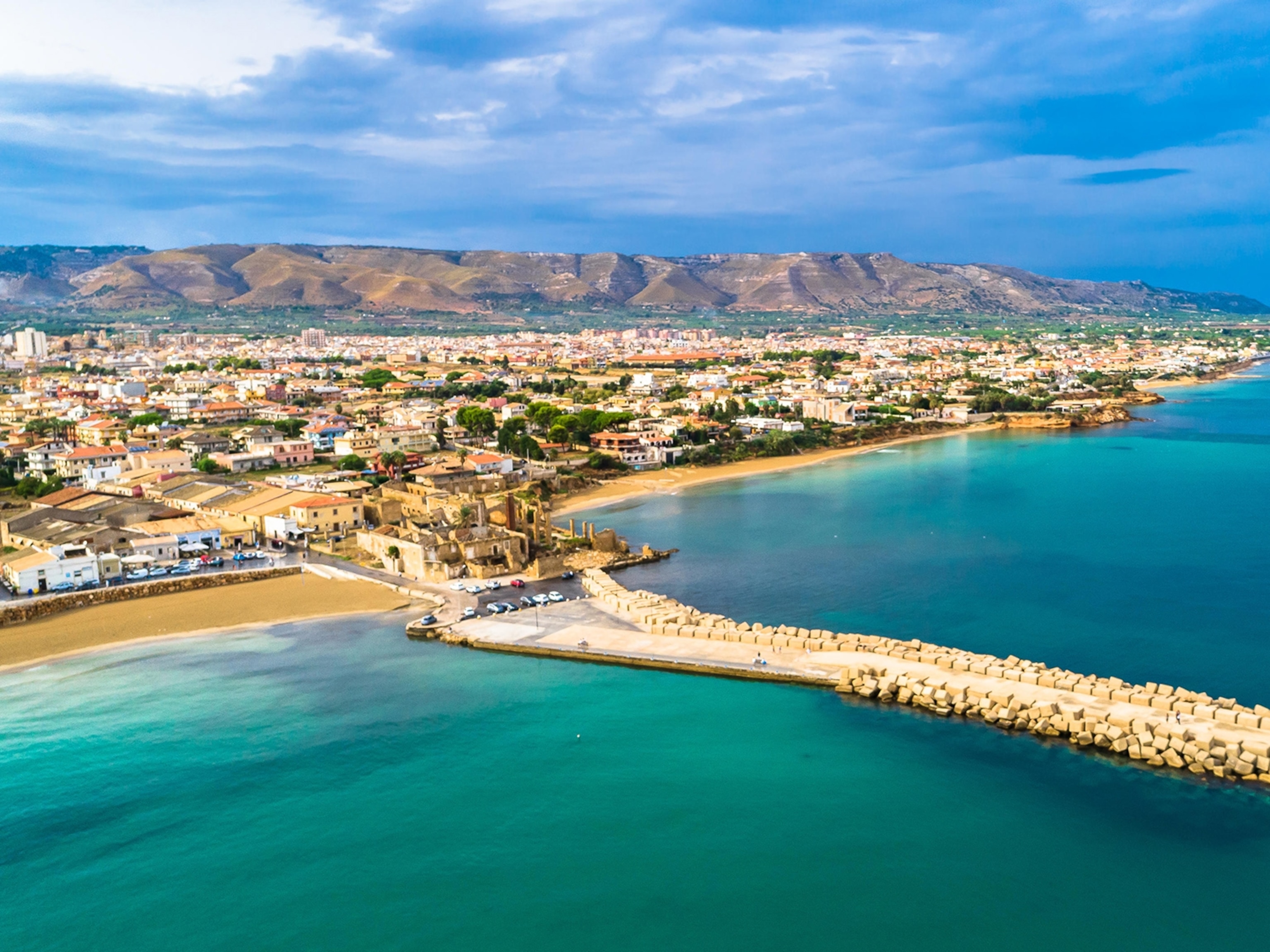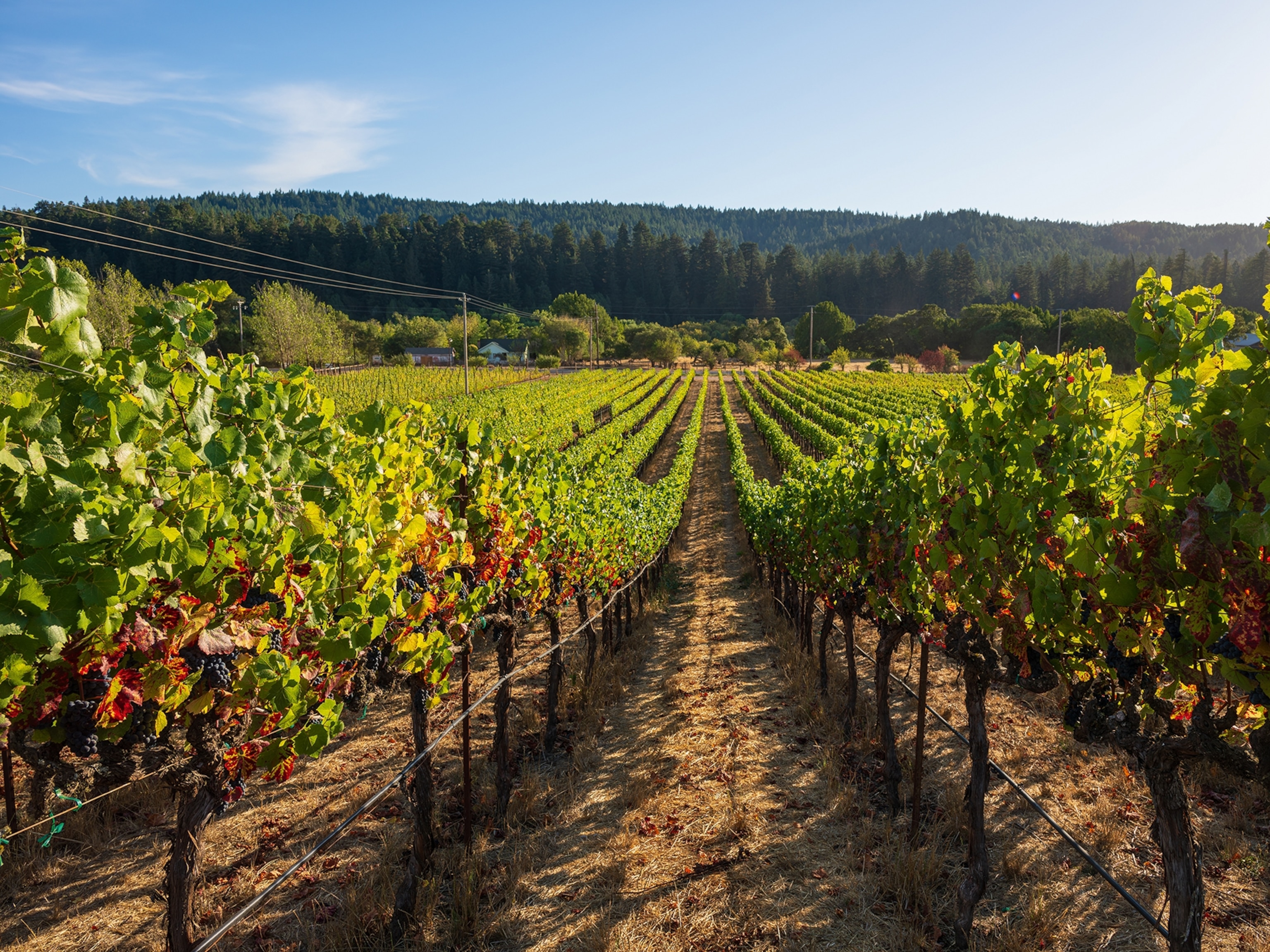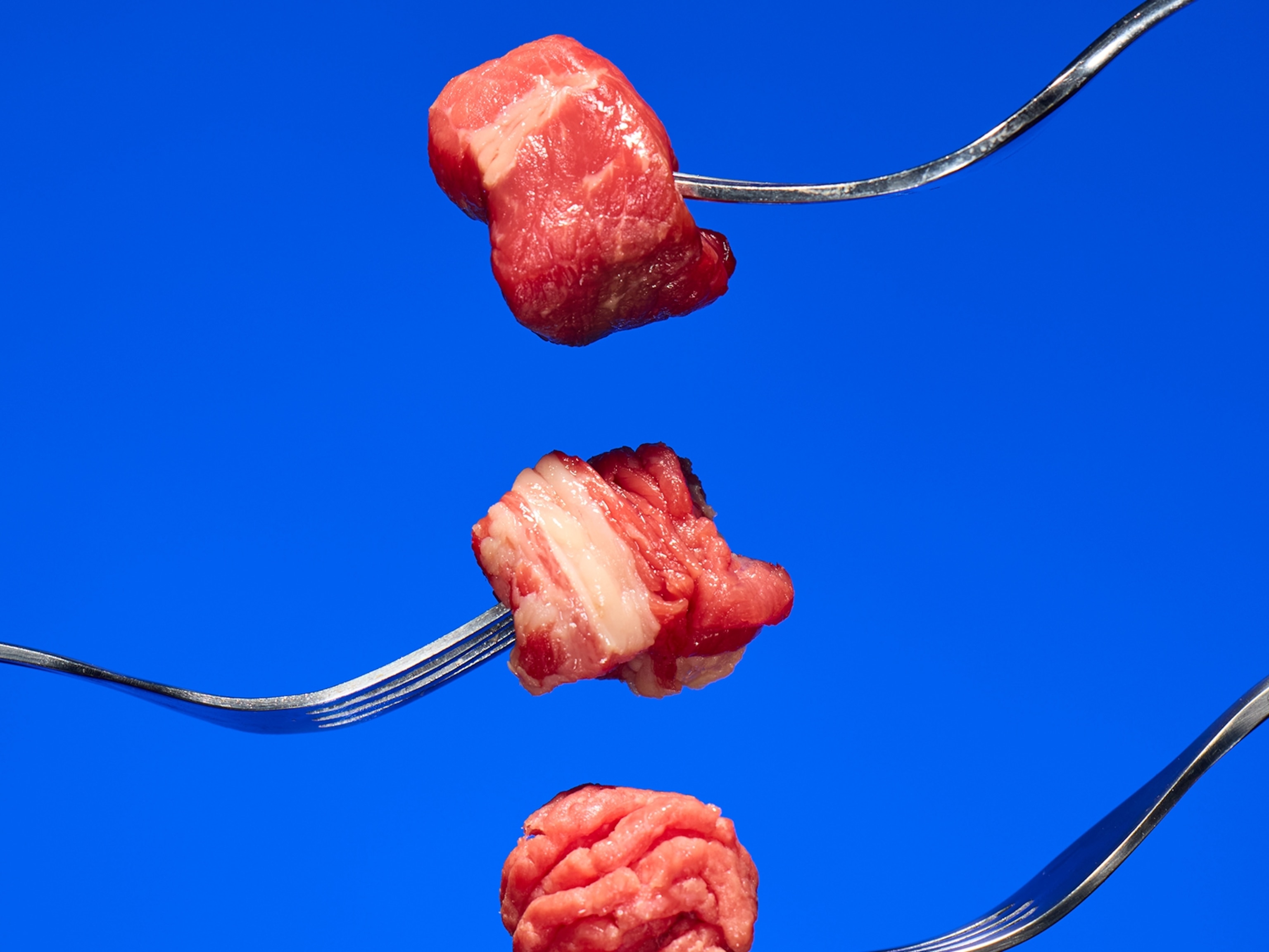Cute Chicken = Meat: Irish Farm Teaches Reality to Urbanites
Visitors get an unvarnished taste of rural life on Airfield Estate, a small working farm not far from the center of Dublin.
The brown and white goats jostle to be first as Irene McGrane climbs over the gate to their lush green pasture, carrying a battered red rubber bucket of feed. She tips it into their trough and they crowd around; their full udders sway when they bump her hip.
Dusting the feed from her gloves, McGrane turns to the crowd who have been following her— 13 elementary-school children who have clambered up the gate to watch, and nine parents hovering behind them.
“Now then,” she asks them, “can any of you tell me what the difference is between a goat and a lamb?”
A boy in a school-uniform polo shirt shoots his hand up so quickly he almost falls over the gate rail. “I know!” he yells. “One of them has horns!”
McGrane blinks. “Hmm,” she says, clearly hiding a smile, “well, it’s a good guess. But maybe not.”
Kids not knowing their sheep from their goats—or a carrot from a parsnip, or where milk really comes from—is a common occurrence at Airfield Estate, the 38-acre farm just five miles outside central Dublin where McGrane cares for livestock and conducts tours like the one she is giving on this sunny summer afternoon. In fact, it’s the reason the farm exists.
Airfield is a working farm, with dairy and meat animals, poultry and fish, and organic vegetable and flower gardens—but it is also an educational enterprise, meant to teach city kids (and their parents) where their meals come from. And while a farm that operates classes and tours and a restaurant may not be a new way to accomplish that, Airfield is unusually well suited—and sited—for doing it. The largest mall in Ireland is a few blocks away, and Dublin’s tram, the Luas, stops 300 yards from the front gate.
The property declares its purpose at its front gate, where a grassy lane bends in from a busy road and winds between a cow pasture and a field where sheep are browsing. Signs explaining the animals hang from the wire fencing. “The three cows in this field are all Jersey heifers who were born at Airfield,” one says. “Once they have a calf they will begin to produce milk and join the rest of our Jersey herd.”
“Our mission is to inspire people to refresh their connection with food and the land it comes from,” Grainne Kelliher, Airfield’s CEO, tells me when she meets me near the front gate, close to another sign that announces: 10 a.m., Egg collection. “There is nothing else in Ireland like this place, and to have a working farm so close to the city we think may be unique in the world.”
Every city should have a demonstration farm featuring both animals and horticulture, that, importantly, serves the food that it grows.Zack Denfield, Dublin Science Gallery researcher
Airfield’s closest analogue in the United States may be the Stone Barns Center for Food and Agriculture, an 80-acre property 25 miles north of New York City that raises livestock and edible crops, runs education programs (see Planting New Farmers for the Future of Food), and houses the high-end restaurant Blue Hill at Stone Barns. Like Stone Barns, which was carved out of a Rockefeller estate, Airfield began as a bequest.
Letitia and Naomi Overend, sisters who grew up in the property’s Georgian mansion and raised prize-winning Jersey cows there, created a trust for the property in 1974, making it an educational center for Dublin. Letitia died in 1977, Naomi in 1993, and Airfield opened to the public in 1996.
Now the descendants of the sisters’ cows graze in pastures around the estate, along with sheep, goats, donkeys, heritage pigs, laying hens and meat chickens, and ducks. Along the property’s back border, beyond the herb garden, the compost pile and greenhouse, and the espaliered fruit-tree maze, there is a sleek demonstration barn, where kids can help milk the cows and taste fresh, raw milk.
But the back wall of the milking parlor is a giant blackboard on which the staff have scribbled, in kid-friendly bright colors, some important caveats about the gentle, dove-colored Jerseys: Raising and feeding them contributes to an increase in climate-changing methane, which Ireland and the entire European Union have committed to reducing.
The board also displays unsentimental solutions for keeping down those emissions: breed faster-growing cattle; raise fewer of them; kill them earlier in their lives.
“We are very honest with the children who come here,” says Kirstie Mcadoo, who has a doctorate in agricultural studies and is the farm’s education coordinator. “We want them to learn where their food comes from, and we are OK telling them that the next time they will see the cute chicken in front of them, it will be a chicken breast.”
Airfield educates local kids through summer camp sessions, tours, and classes with content that links to school learning plans, and also hosts informal and individual visits by kids and adults. (On the weekday I visited, families were gathering at the 110-seat restaurant, Overend, for lunches of quiche and roast suckling pig followed by fresh rhubarb ice cream.) The farm stages special events: Sept. 8-11 with be its annual Festival of Food, which includes workshops on gardening and foraging, a celebrity chef dinner, and a “trash bash” meal concocted from ugly vegetables and kitchen discards.
But Airfield also works to extend farm-based education beyond its rustic fences and beyond its youngest visitors. Dublin is the home of Science Gallery, created by Trinity College Dublin: a museum-like space where rotating interactive exhibits combine science and art to engage teens and young adults. (The Dublin one is the first of a planned eight Science Galleries around the globe; next up are Bengaluru in India and Melbourne in Australia.)
The gallery partnered with Airfield for part of its spring 2016 exhibit, which was called FIELD TEST: Radical Adventures in Future Farming. Before the exhibit opened, the museum and the farm worked out a semester-long curriculum on the future of agriculture for students from Trinity and the National College of Art and Design; the class was held partly at the farm.
Kelliher, who became the farm’s CEO in 2014 after working for the global food company Aramark, grew up on a dairy farm in Ireland’s southwest.After two years at Airfield, she has a fresh appreciation for how rare that experience was.
“We surveyed 1,500 kids on their knowledge of milk, and while they mostly knew it comes from a cow, most of them didn’t know where on the cow,” she tells me. “They’ll ask us, ‘How do you get beef from a cow without killing it?’”
As in the United States, the percentage of the Irish population that has any connection to farming is growing smaller all the time. The ferocious recession that took down the Celtic Tiger economy pushed half a generation of young adults into the cities and broke their connections to the farm towns they came from; that same economic pressure forced small farms to choose between consolidating into large companies or closing. And the open borders of the European Union make it easy for the Irish to take vacations in other countries, instead of driving into the green countryside as their parents might have done.
“City folk in every part of the world, we’re the same about farms: We don’t understand them, they are so far removed from us,” says Kevin Thornton, proprietor of the Michelin-starred restaurant Thornton’s in central Dublin. Thornton maintains an informal connection to Airfield, foraging for herbs in their woods and scooping up their excess produce for use in his restaurant. Not long ago he staged a masterclass in butchering there, killing and breaking down one of farm’s goats for an audience.
Thornton would love to source more from Airfield, but the farm does not sell its produce, and becoming a market farm is not part of its mission. Airfield charges admission—it had 280,000 visitors last year—in order to pay its 75 employees. It fills the vases on the restaurant tables and the centerpieces at weekend weddings and events with the products of its lush flower gardens, sells the honey from its bees and lavender from its hedges in its shop, and stacks the plates at its restaurant with the products of its barns and fields.
But it does not seek to grow—if it even could; it is hemmed in by apartment blocks—and its fans support that. A self-sufficient small property shows how food production can fit into a city much better than a sprawling production farm would.
“Every city should have a demonstration farm featuring both animals and horticulture, that, importantly, serves the food that it grows,” says Zack Denfield, a Science Gallery researcher who drew Airfield into the museum’s Field Test show. “It prototypes the blending of urban, rural and agriculture that could characterize our land use patterns tomorrow.”








